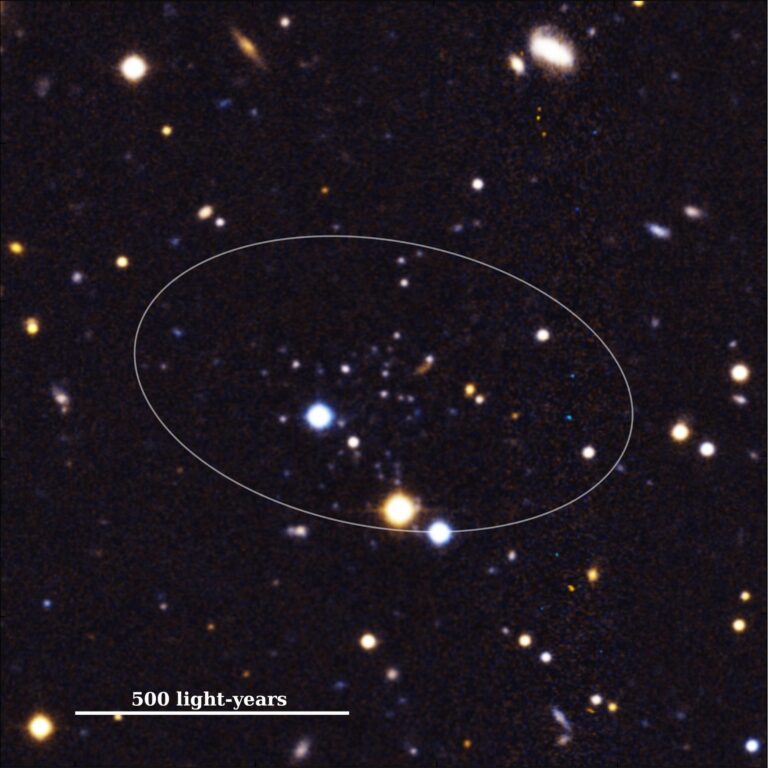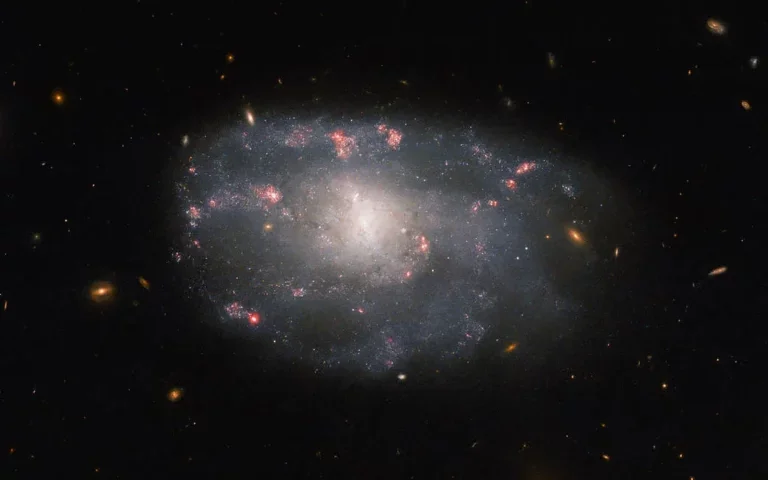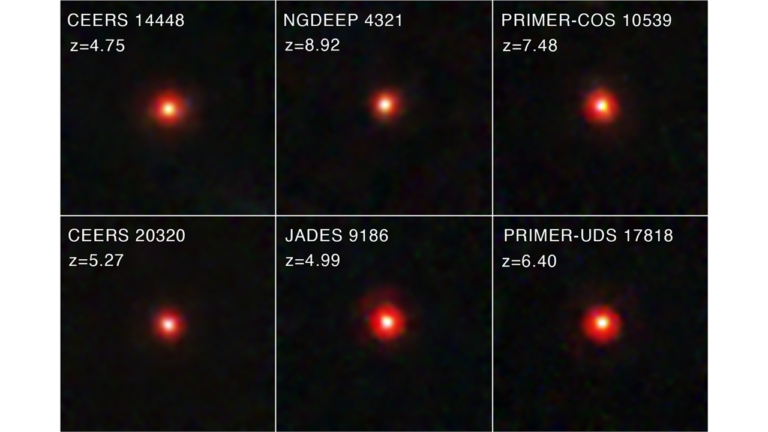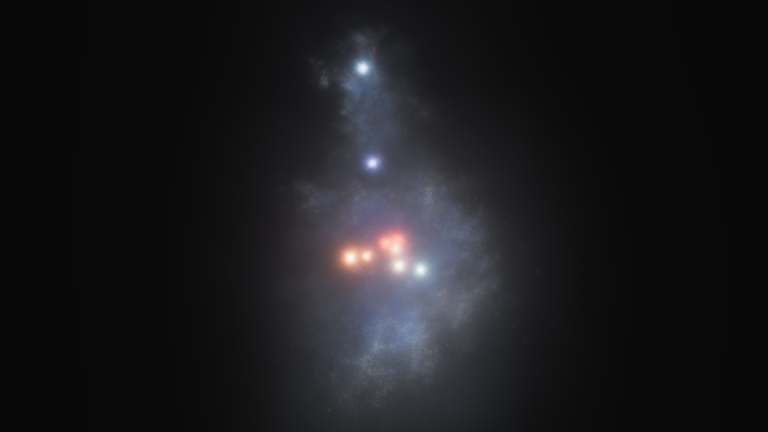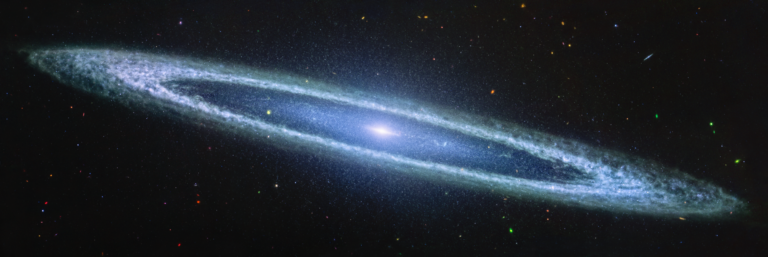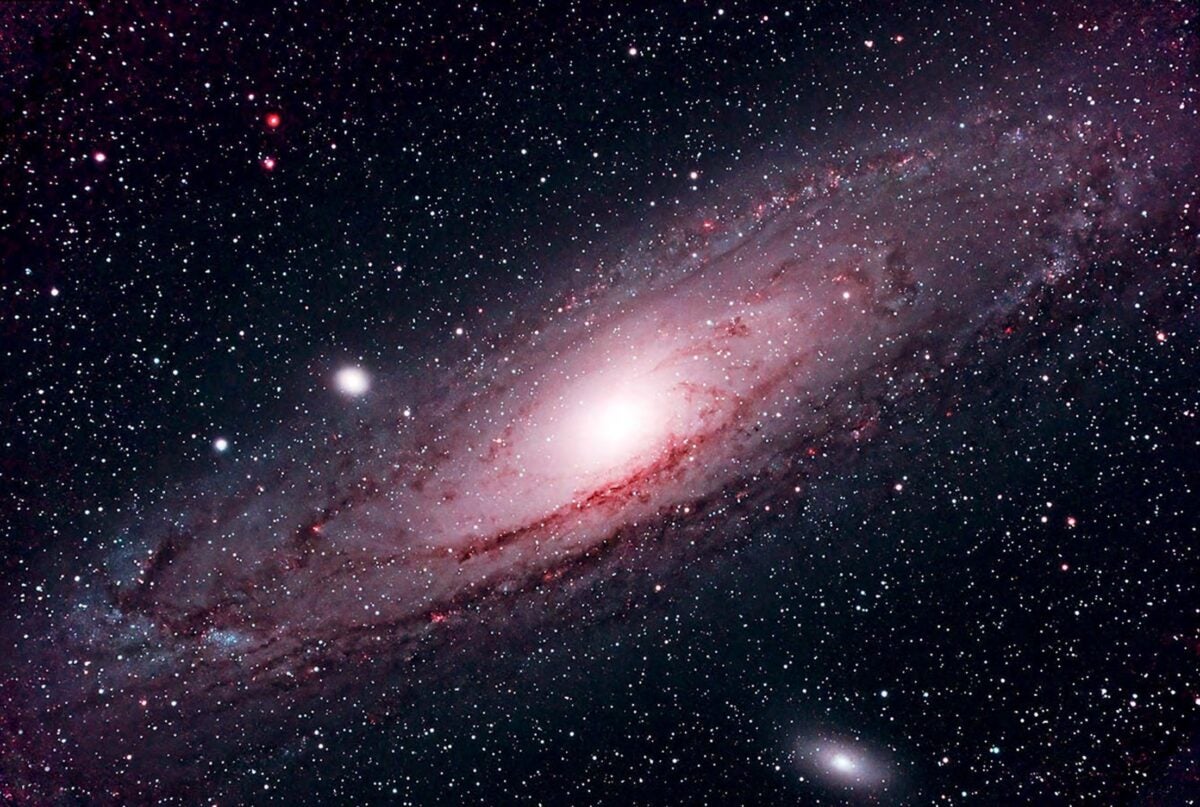
The famed Andromeda Galaxy, or M31, draws attention at public star parties not only because it is the nearest major member of the Local Group to our Milky Way, but also because most people are aware that it is set to collide with our galaxy.
Some people become anxiously curious about what that collision is expected to look like, and most importantly, when it will occur. Any astronomer on site can reassure them, though, that the merger will not happen for billions of years and will be gradual rather than an abrupt crash.
For the time being, Andromeda lies 2.5 million light-years away. Amazingly, light from the inclined galaxy’s front reaches us about 65,000 years before that from its rear. In short, we are observing an image distorted in both space and time.
On dark, moonless nights, Andromeda may first appear as a faint and fuzzy oval with a brighter center through an amateur telescope, but a prolonged look reveals its central core, foreground dust lanes, and hints of a spiral structure.
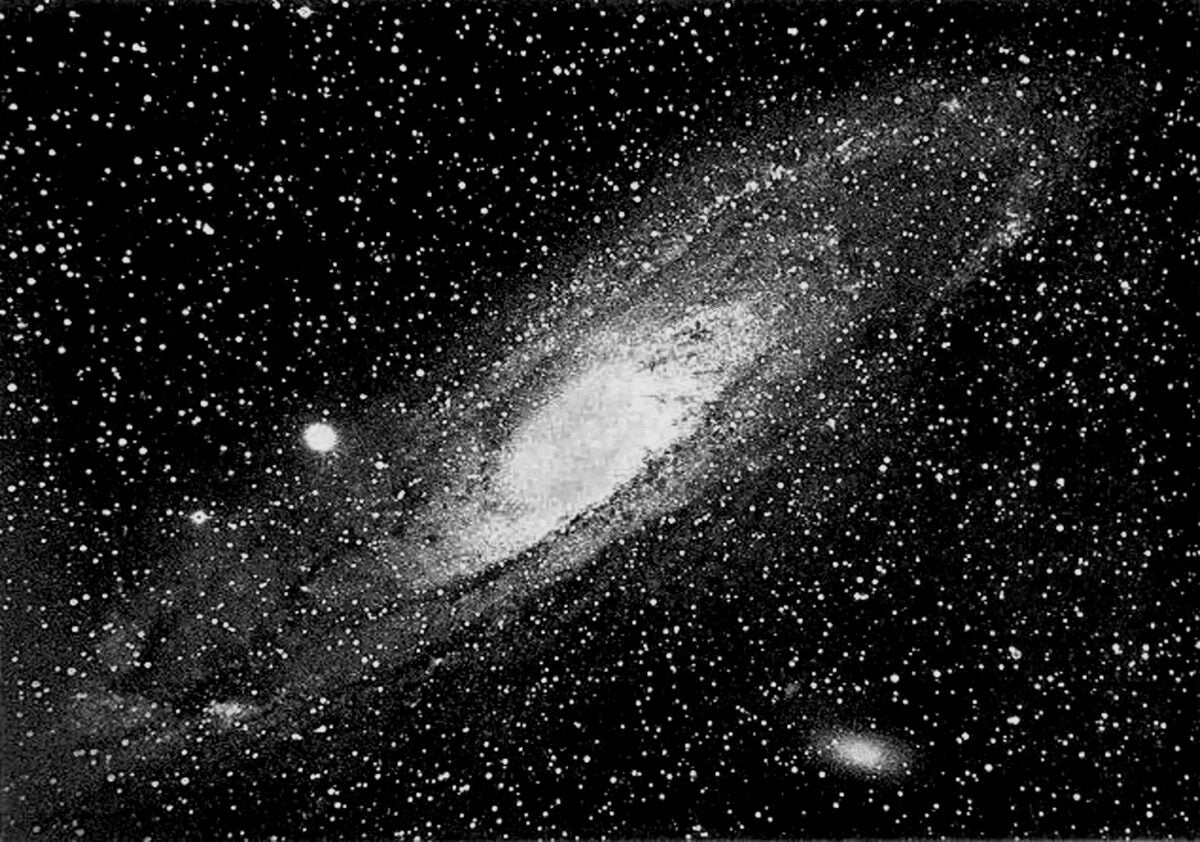
Deciphering Andromeda
Andromeda’s existence has been known since antiquity. It was initially deemed a nebula, a term applied to all deep-sky objects that could not be resolved into stars. Nebulae were believed to lie within the Milky Way, and the systems that exhibited spiral patterns (such as Andromeda) were termed spiral nebulae and thought to be actively forming stars. William Herschel identified M31 as “undoubtedly the nearest of all the great nebulae” and estimated its distance to be about 18,000 light-years. Coincidentally, in 1783 his sharp-eyed sister Caroline, an accomplished astronomer herself, independently discovered M110, one of the two main satellite galaxies of Andromeda.
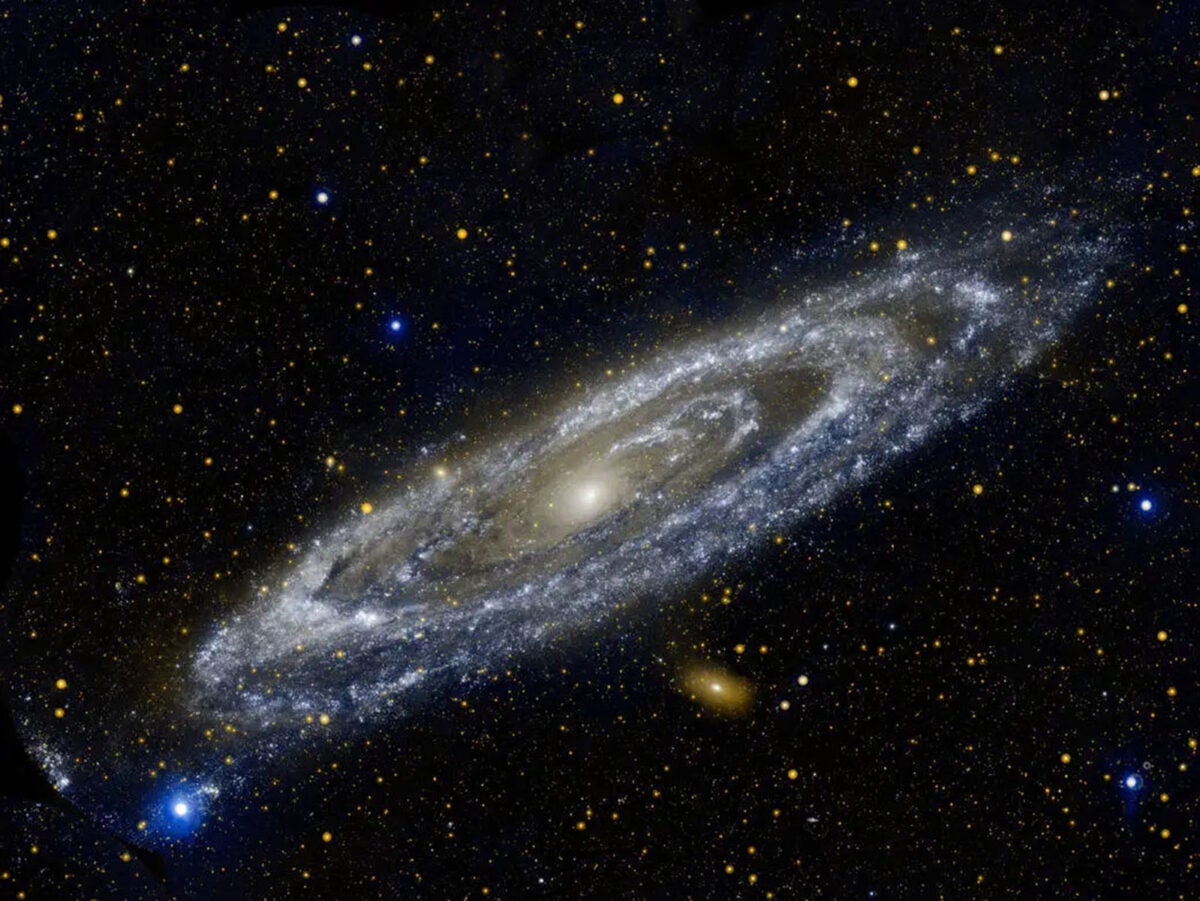
A better understanding of spiral nebulae was not possible before the development of spectroscopy and photography. In 1864, English astronomer William Huggins, known for his pioneering work in astronomical spectroscopy, showed that unlike the pure gas emission characteristics of the Orion Nebula (M42), Andromeda’s spectrum displayed starlike features, including dark absorption lines. In 1912, M31’s spectra captured by American astronomer Vesto Slipher at Lowell Observatory showed the object had an approaching radial velocity of 186 miles (300 kilometers) per second, highly unlikely for a Milky Way object, since it was the highest velocity ever measured.
The first detailed photograph of Andromeda and its two satellites, M110 and M32, was taken in 1888 by wealthy Welsh engineer and amateur astronomer Isaac Roberts. Like his contemporaries, Roberts thought it was a star system in the making. He took Andromeda’s photograph with his twin telescope — a 20-inch reflector and a 7-inch refractor on a shared mount — from his private observatory near Liverpool.
Roberts was a true pioneer of deep-sky photography and realized that long exposures were needed to record details in faint nebulous objects. He developed a method that we now call piggyback photography for wide-field imaging by using portrait cameras mounted atop a guiding telescope for accurate tracking. In this way, he obtained some of the first high-resolution pictures of prominent deep-sky objects such as the Pleiades (M45), Andromeda, the Triangulum Galaxy (M33), the Veil Nebula, and dozens more. Many of these photos were subsequently published in 1893 and 1899, in a two-volume book set titled A Selection of Photographs of Stars, Star-clusters, and Nebulae.
However, Roberts’ images and the known facts about Andromeda weren’t sufficient for scientists to agree on the galaxy’s classification or distance measurement. The arguments reached their peak in 1920 when astronomers Heber D. Curtis and Harlow Shapley faced off in the Great Debate over the scale of the universe. Curtis argued that spiral nebulae were beyond and not part of the Milky Way, while Shapley maintained the opposite. The debate was irrevocably settled a few years later in 1923, when Edwin Hubble resolved a Cepheid variable star (used to measure cosmic distances) in photographs of Andromeda taken with the largest telescope in the world at the time, the 100-inch reflector at Mount Wilson Observatory. Using this distance indicator, he essentially proved M31 was a galaxy well outside our Milky Way.
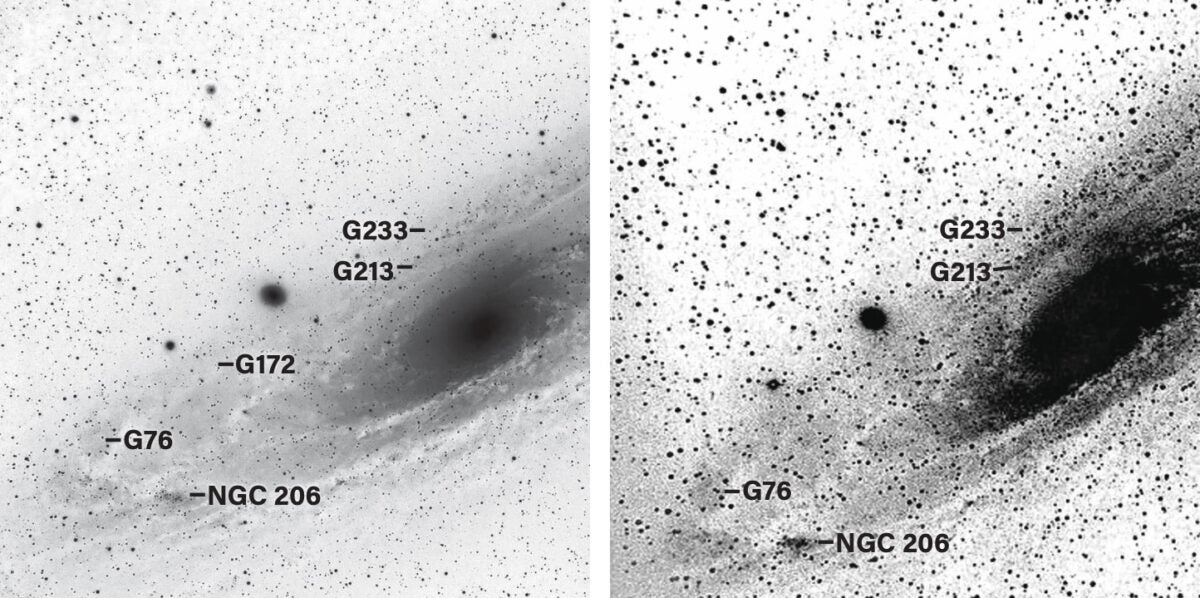
A new set of eyes
Tremendous advances have been made in the century since Hubble and his contemporaries opened the door to modern cosmology. Perhaps nothing illustrates that more graphically than the evolution of imaging technology.
Roberts’ historic photo of Andromeda required a four-hour hand-guided exposure using the very slow and grainy glass photographic plates available during that time. Nonetheless, it revealed an huge amount of unprecedented detail and not only revolutionized astronomical photography, but also provided the first pictorial indication that spiral nebulae were more than mere gaseous clouds.
Today, some 130 years later, a full-color image of M31 can easily be taken with a 5-inch apochromatic refractor and spectrally modified Canon R digital camera. Additionally, it only requires a total of 18 minutes of autoguided exposure time to record equally faint stars and gather sharper detail in the galaxy itself. Moreover, thanks to the use of narrow bandpass filters — which preferentially transmit wavelengths emitted by ionized hydrogen, H-alpha (Hα, red) and H-beta (Hβ, blue), and doubly ionized oxygen (OIII, blue) — the modern image reveals scattered pink emission nebulae along the galaxy’s spiral arms, areas of interstellar dust (reddish brown), and hot young stars (blue).
A prominent region of such young stars resides in NGC 206, clearly resolved at the bottom left of both images. This immense star-forming region appears blue due to its extra-hot and luminous O- and B-type stars and light-scattering interstellar dust. It is readily visible in a medium-sized scope.
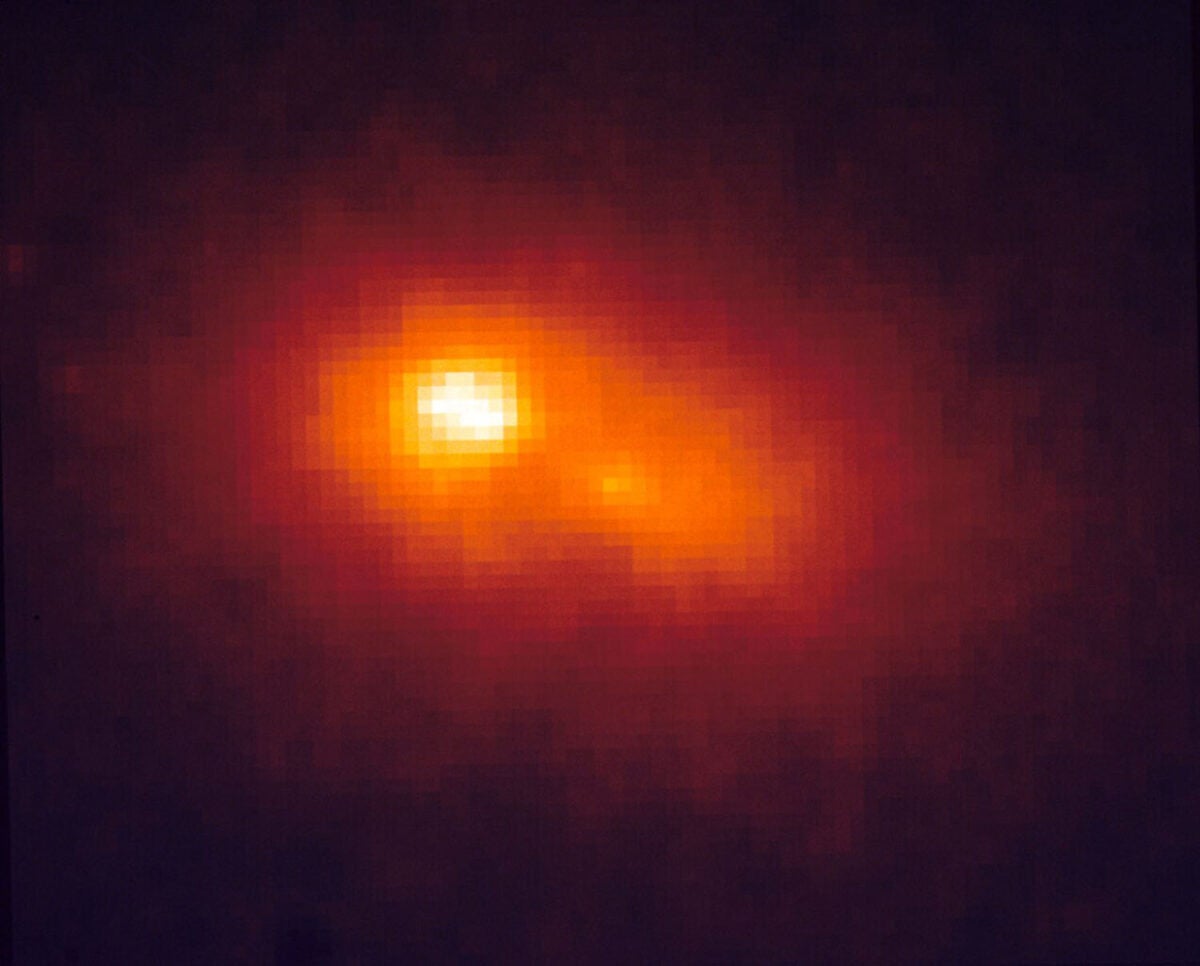
Looking inside
The Andromeda Galaxy hosts about 500 globular clusters of various ages, sizes, and stellar compositions. In comparison, the Milky Way only has about 160 globulars. What accounts for this huge disparity between the two galaxies remains unclear, but it clearly reflects differences in their evolution over time. Some of the larger and brighter globulars in M31 can be resolved with medium-sized telescopes. In my experience, a quality 10-inch scope, dark skies, and a proper identification chart make spotting globulars a challenging but fun project. (Phil Harrington’s Cosmic Challenge: The Ultimate Observing List for Amateurs [Cambridge University Press, 2019] provides several such challenges, available at www.philharrington.net/cc01.htm.)
Roberts would be astounded to learn that his historic photo of M31 also recorded NGC 206 and several globular clusters. A side-by-side comparison of the negatives of his image and the modern-day one (bottom two photos above) shows that clearly. The globular cluster G76, located in the galaxy’s southwest arm, has the greatest apparent brightness. Given the low sensitivity and grainy nature of the state-of-the-art photographic plates available in 1888, Roberts’ accomplishment is truly extraordinary.
Our understanding of Andromeda’s structure, composition, and evolution is improving rapidly thanks to advanced technologies and space telescopes, which make it possible to obtain data across a broad range of wavelengths including far ultraviolet (UV) and infrared (IR) — neither of which is accessible with ground-based telescopes. For example, NASA’s Galaxy Evolution Explorer (GALEX) space telescope captured images in far- and near-UV light, revealing hot, young stars forming in the spiral arms.
Similarly, IR images from the Spitzer Space Telescope unveiled yet more layers of information about this massive galaxy. In addition to highlighting its waves of dust (red), the IR data also reveal older stars (blue). Images like this let astronomers estimate the mass of galaxies by measuring their total IR brightness. From such data, researchers deduce that M31 contains about a trillion stars — the Milky Way has 400 billion.
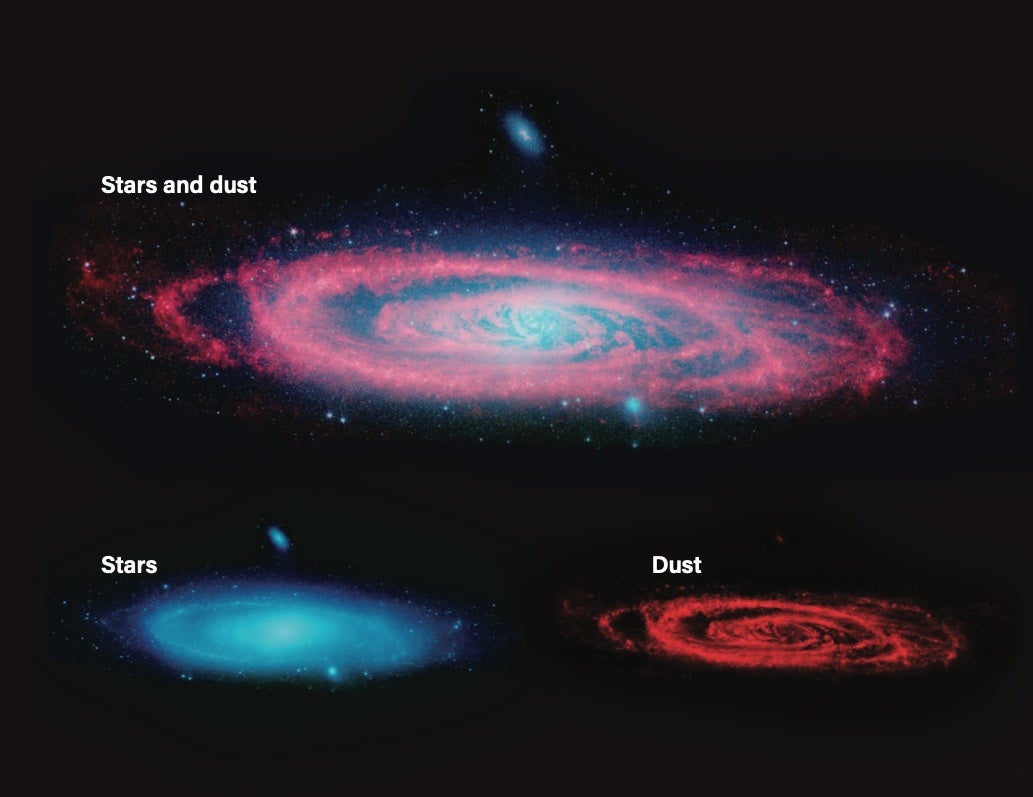
In the arms of Andromeda
When it comes to Andromeda’s inner structure, Spitzer images indicate that two possibly segmented spiral arms extend outward from a central bar, thereby classifying it as a barred spiral. Indications based on Hubble Space Telescope images suggest the galaxy has not just one, but two components in its nucleus. The mysterious, brighter one is dubbed P1 and the dimmer one is P2; P2 contains a supermassive black hole. It is now known that while P2 is indeed the true center of M31, the brighter component is actually an elliptical ring of old reddish stars orbiting the black hole. Computer simulations have tested different scenarios to better understand how such an arrangement could have formed, but the details remain uncertain.
The most complete summary to date about the structure and evolutionary history of the Andromeda Galaxy has been obtained by combining data from several diverse sources, such as the European Space Agency, NASA, the National Radio Astronomy Observatory, and IRAM radio telescopes (top image).
Future observations with the James Webb Space Telescope and other state-of-the-art instruments will undoubtedly provide us with an even more detailed evolutionary picture of this great galaxy — and, by extension, our Milky Way.


